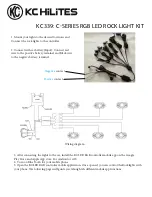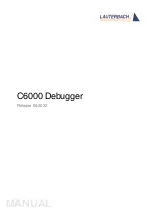
8
World Precision Instruments
Replacing the Membrane Sleeve
Even with the best of care and proper maintenance, the membrane sleeve will
eventually need to be replaced.
TIP
: You can verify that the membrane sleeve on this sensor has not been
compromised by lightly touching the sensor tip (membrane) to a Kimwipe. If the
Kimwipe has a yellowish spot on it, the yellow filling solution is leaking through the
membrane sleeve and the sleeve will need to be replaced.
1. Unscrew the locking cap from the handle.
2. Hold the stainless steel sleeve and remove it and the locking cap from the internal
electrode assembly, being careful not to bend the internal electrode assembly
when doing so.
3. Rinse the internal electrode with distilled water (particularly the tip) and let it soak
for at least 15 minutes. Be careful not to let water get up into the handle.
4. Gently dry the electrode with a soft tissue (Kimwipes). Be sure to dry thoroughly
the flat surface at the tip of the electrode. After drying the current should stabilize
fairly quickly to a low value (for example, 0 - 20pA). If this occurs, it is a good indi-
cation that the electrode is functioning properly.
5. If the electrode is not clean, repeat steps 3 and 4.
6. Remove the locking cap from the old used sleeve, and gently slide it onto the new
replacement sleeve. Additional membrane sleeves (WPI#
600016
) may be pur-
chased separately.
7. Dip the internal electrode 1–2cm into the
ISO-H2S
electrolyte (WPI #
100084
)
provided in the start-up kit. The current will rise rapidly offscale. Using the
MicroFil™ nonmetallic syringe needle (WPI #
MF28G67-5
) and 1mL plastic syringe
(included in the Startup kit) inject approximately 100µL of electrolyte directly into
the new sleeve, starting about half way down the sleeve and drawing the MicroFil
out of the sleeve as it fills. The filling process should be performed slowly enough
so as not to create turbulence, which could introduce air bubbles into the
electrolyte. The MicroFil (#
MF28G67
)supplied in the startup kit is less than the
length of the sleeve, so that it will not puncture the delicate membrane at the tip
of the sleeve during injection.
TIP
: If air bubbles form in the electro-
lyte, gently flick or tap the side
of the sleeve to remove the bubbles.
8. Slowly and smoothly insert the
electrode into the sleeve, and screw
the locking cap into the handle. The
electrode should be observed to press
gently against the membrane (
Fig. 5
).
Fig. 5—(Right) Membrane placement. The
internal electrode tip should protrude
slightly out into the membrane.
The internal electrode tip
should protrude slightly
out into the membrane.
Содержание ISO-H2S-2
Страница 4: ...ii World Precision Instruments...
Страница 16: ...12 World Precision Instruments...
Страница 18: ...14 World Precision Instruments DECLARATION OF CONFORMITY...






































